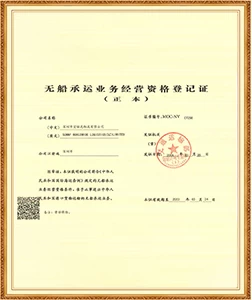Freight rates rose across all routes, with European and continental routes soaring
Sunny Worldwide LogisticsIt is a logistics company with more than 20 years of transportation experience, specializing in markets such as Europe, the United States, Canada, Australia, and Southeast Asia. It is more of a cargo owner than a cargo owner~
The container freight index ended its eight-week downward trend. The latest Shanghai Containerized Export Freight Index (SCFI) showed that the index rose sharply by 123.18 points to 2185.33 points, with a weekly increase of 6%. During this increase, the four major routes all showed a rebound trend. Among them, the freight rates from the Far East to Europe and the Far East to the Mediterranean both rebounded by more than 10%; the freight rates from the Far East to the US East also reached the US,000 mark again. The industry It is expected that the GRI (General Rate Increase Surcharge) in November is expected to be smoothly increased.
Industry insiders pointed out that the market price of FAK rates this week was approaching US,000, and the actual market prices were relatively chaotic, which to a certain extent promoted the rise of the SCFI index. Shipping companies plan to increase prices in November, but they still need to observe actual market conditions. Price levels next week are expected to be similar to this week.
Specifically, the increase in the Shanghai Export Freight Index SCFI was mainly due to the simultaneous rebound of major European and American routes. Among them, the European line and the Mediterranean line rose by 14.15% and 10.51% respectively, becoming the main driving force for the rise of the overall index; the US West Line and the US East Line rose slightly by 1.21% and 2.61% respectively.
The successful call for price increases during the off-season shows the shipping company's firm determination to push prices higher. Since the beginning of July, freight rates have continued to fall. Shipping companies have tried to stimulate shipments and stabilize freight rates through technical adjustments to shipping capacity (such as empty sailings, slow sailing) and the strategy of using rising prices to stop falling. These measures are gradually reflected in the decline in the SCFI index, which was almost flat last week and turned upward this week.
In the past week or two, there have been reports of tight shipping capacity on the European and Mediterranean lines. Shipping companies are targeting ships departing from Asia in early November, which are expected to catch up with Europe's Christmas and New Year cargo needs. Therefore, European shipping companies took the lead in charging space purchase fees, charging about US0 to US0 per 40-foot container, and successively issued GRI price increase notices. Shipping companies such as Maersk and CMA CGM announced price increases on the 25th and 27th respectively, and some shipping companies plan to increase prices on November 1. It is said that the price increase ranges from 1,400 to 1,600 US dollars per 40-foot container. These are all That could be reflected in the SCFI's gains this week.
However, many freight forwarders said it still needs to be observed how long the European and Mediterranean lines can maintain their gains and how much they will increase. From the second half of November to the first half of December, ships no longer have year-end holiday cargo to carry, so whether the reduction in cargo volume can support freight rates has become the key. Next, we may have to wait until after the second half of December, that is, before the Chinese Lunar New Year holiday, when the demand for stocking in Europe and the United States comes out, will there be a small peak season. As long as the cargo volume is sufficient, shipping companies may still be brewing a new round of price increases.
In terms of the US-Western route, freight rates have basically remained stable, and there are reports of many ships bursting into cabins on the US-Southwest route. The US Eastern Line was affected by strikes and some ships were unable to return on time. Coupled with factors such as the shipping company's adjustment of cabin space, the US East Route has successfully increased the price by US0. But whether this increase can be maintained depends on the volume of goods next week.
According to industry insiders in the freight forwarding industry, shipping companies have successively informed American Line that prices will increase on November 1. MSC (Mediterranean Shipping Lines) plans to increase prices by US0 to US0, while shipping companies such as CMA CGM and COSCO Shipping Lines plan to increase prices by approximately US,500. This shows the differences in the shipping companies' views on the future market.
Logistics analysts believe that although the strike in the East United States seems to have been resolved, the subsequent impact has only just begun to appear. The recent situation in the container shipping market has been chaotic. A strike in the Eastern United States has caused some cargo to be diverted to the Western United States, resulting in an explosion of cargo on the Western-U.S. line. However, the situation has eased slightly this week. As shipping companies actively stabilize freight rates, based on analysis of current market conditions, the possibility of an additional GRI of US0 to US,000 on the North American line from November cannot be ruled out.
Industry insiders point out that current market conditions remain elusive. Although the strike in the East US only lasted for three days, it still caused some flight delays and the diversion of cargo to the West US. This led to a burst situation in the western United States, which only eased slightly this week. Shipping companies have also begun to quote prices one after another. For example, MSC's quote this week is US,950 for the US West Line and US,350 for the US East Line, an increase of about US0 to US0; Evergreen's quote for the European Line is about US,650. However, based on the current volume of goods, the probability of price increases in the US West is higher; while the US East and Europe lines require continued observation.
In addition, the global shortage of container ship dispatching has also exacerbated market volatility. After the demand for cargo volume was released, the sluggish European line made a full-scale counterattack. The freight rate from the Far East to Europe reached US,226 per TEU, an increase of US6 from the previous period, a weekly increase of 14.2%, returning to above the US,000 mark; the freight rate from the Far East to the Mediterranean reached US,555 per TEU, an increase of US3 from the previous period, an increase of 10.5%.
According to the latest freight rate data, the North American line has also stopped falling and increased. The price per FEU (40-foot container) from the Far East to the US West reached US,783, an increase of US, or 1.2%, from the previous period; the price per FEU from the Far East to the US East reached US,099, an increase of US0, or 2.6%, from the previous period, returning to 00.
According to Drewry statistics, major shipping companies around the world have made market capacity adjustments in response to the sluggish market demand in the past two months and the impact of shipping schedules on strikes in the Red Sea and the East United States. During the 40th week (September 30th to October 6th) to the 44th week (October 28th to November 3rd), 100 flight cancellations have been announced, with a cancellation rate as high as 14%. 63% of the blank flights occurred on the eastbound trans-Pacific route (usually from Asia to North America); another 23% occurred on the Asia-North Europe and Mediterranean route; 14% occurred on the westbound trans-Atlantic route.




















